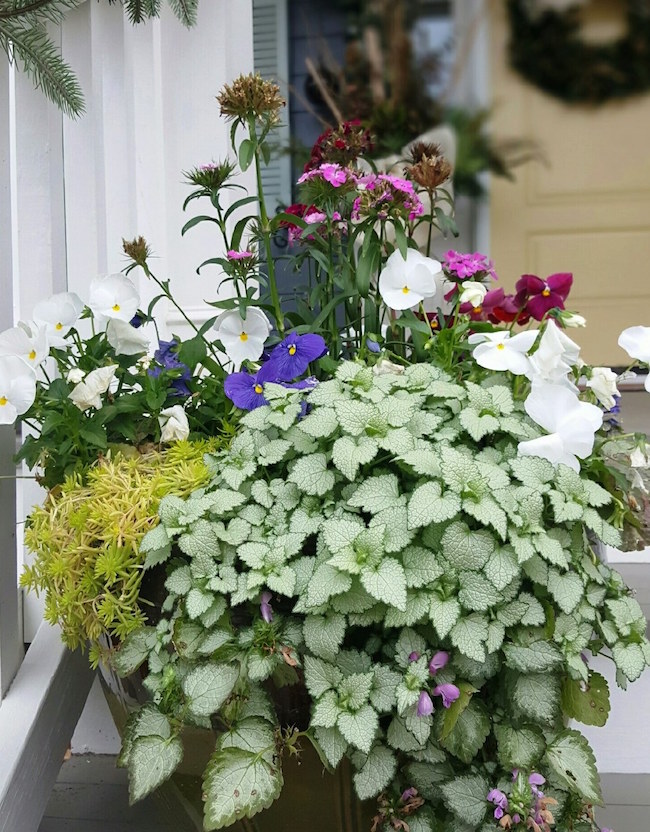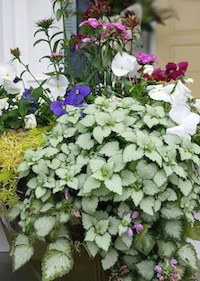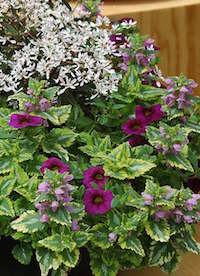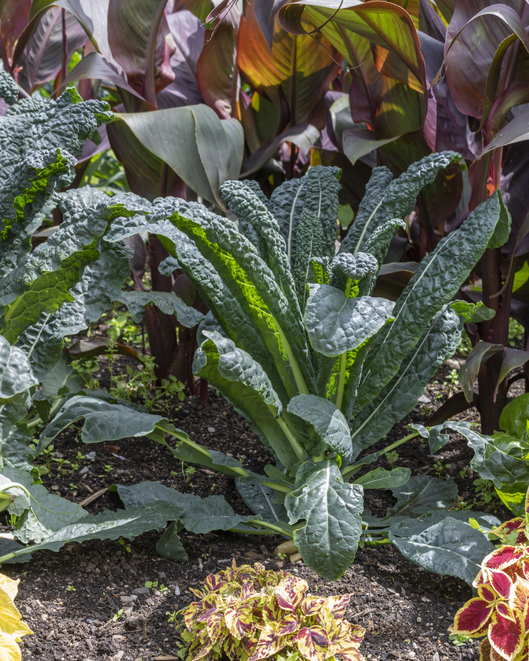If I told you to let deadnettle liven up your mixed containers, you might think of it as an oxymoron, or perhaps that I was just a moron, as “dead” and “nettle” sound none too lovely in the landscape. As they say in France, “au contraire”: deadnettle is the common name for a terrific perennial or annual that goes by the scientific name of lamium.
Botanically speaking, the plant is known as “Lamium maculatum” and is native to southern Europe and northern Africa. It is cold hardy from zones 4 through 8, which means that a large area of the country can enjoy it. There are now close to 30 varieties being sold in the U.S. I regularly see ‘Orchid Frost,’ ‘Beacon Silver,’ ‘Pink Chablis,’ a white, flowered version called ‘White Nancy’ and one with chartreuse margins called ‘Anne Greenaway.’ ‘Pink Chablis’ won awards in trials at the Dallas Arboretum and Botanical Garden, the University of Georgia and JC Raulston Arboretum in North Carolina.
I’ve always loved lamium for the texture provided by its variegated foliage that looks silver and green, and I consider the lavender-pink blooms that develop an added bonus. I find this plant is often misunderstood or underappreciated by gardeners. If gardeners consider its heritage in a Mediterranean-like climate, it really helps. By that, I mean fertile soil and drainage.
Among the most riveting places I’ve watched it grow are in mixed containers with light, fluffy soil that freely drains. In the landscape, I’ve seen the captivating combinations with perennial salvias and shadier locations with ferns, hostas, ajuga and Chinese foxglove, all of which likewise require good internal drainage.
The Lamium maculatum varieties may be evergreen, semievergreen or deciduous depending on the mildness of your climate. An internet search will show all options in regard to the amount of sunlight they can withstand. My recommendation is morning sun and afternoon shade, or filtered shade. Never underestimate the ability of the silver foliage to add interest or brighten a shady location.
However, the cooler the climate, the more sun they can take, so I love them as a component plant in cool-season mixed containers with pansies, snapdragons, dianthus and other foliage. Lamium is an 8- to 12-inch tall plant that spreads up to 24 inches, which makes it a perfect spiller plant.
Lamiums have some other terrific attributes. They are self-cleaning, which means no crawling into a big bed of groundcover to deadhead old flowers. About the only maintenance you need to do is shear them back in early spring before growth resumes. One of the most loved traits, however, is that they are resistant to rabbits and deer.
January is a month typically in a self-induced holding pattern when it comes to gardening. If you find that you failed to get cool-season containers planted, then take advantage of fresh shipments of pansies, violas, petunias, dianthus and all the other component plants, like lamiums, as they arrive at your garden center. If you act now, you will still be able to have several months of colorful bliss on your porch, patio or deck.
Follow me on Twitter @CGBGgardenguru. For more information about the University of Georgia Coastal Georgia Botanical Gardens at the Historic Bamboo Farm, go to www.coastalgeorgiabg.org.









